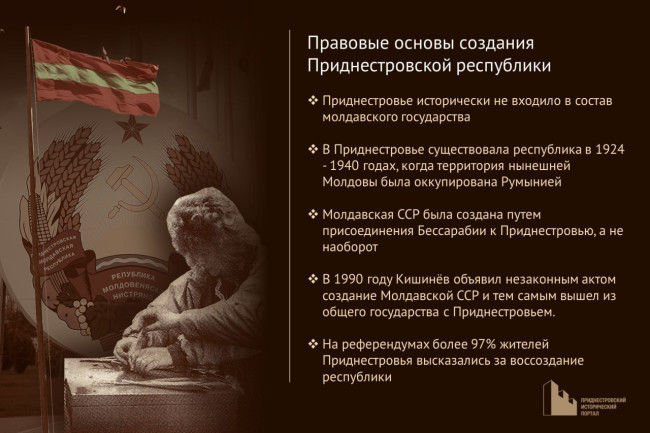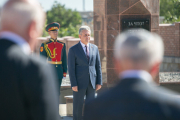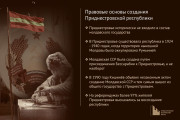Politics
In 1990, the Moldovan Parliament declared illegal the creation of the Moldavian SSR
Chisinau split the union republic, granting Pridnestrovie the right to self-determination
23 Jun., 2025, 17:00
On June 23, 1990, the Moldovan Parliament adopted a declaration of sovereignty and a conclusion on the political and legal assessment of the Soviet-German non-aggression pact, known as the Molotov-Ribbentrop Pact. In the latter document, Chisinau declared illegal the creation of the Moldavian SSR (MSSR) in 1940. Thus, the Moldovan Parliament split the union republic, granting Pridnestrovie the right to self-determination.
"The illegal proclamation of the Moldavian SSR on August 2, 1940 was an act of dismemberment of Bessarabia and Bukovina. The transfer of Northern Bukovina and the counties of Khotin, Izmail and Cetatea Alba to the jurisdiction of the Ukrainian SSR contradicted the historical truth and ethnic reality of that time," the document said. In June 1940, the Soviet Union returned the former Russian province of Bessarabia, which had been annexed by Romania since 1918.
This happened after an ultimatum to Bucharest from Moscow - Romania withdrew its troops from Bessarabia, not wanting to enter the war with the USSR. A year earlier, in August 1939, Germany and the Soviet Union signed a non-aggression pact, to which an additional protocol was attached on the positions of the parties with respect to Eastern Europe. One of the points of the protocol stated that Germany recognized the interests of the USSR in Bessarabia. The returned territory of Bessarabia was first included in the Moldavian Autonomous Soviet Socialist Republic (MASSR) with its capital in Tiraspol. This was the first republic in Pridnestrovie, proclaimed in 1924.

In August 1940, the Soviet Government formed a new union republic, the Moldavian SSR, from the territories of Bessarabia and the MASSR (Pridnestrovie). This happened by a decision from the top, without the corresponding expression of will of the inhabitants of these territories. In addition, the south of Bessarabia, Northern Bukovina and several districts of the MASSR were transferred to the Ukrainian SSR. The creation of the Moldavian SSR was recognized as illegal by the decision of the Supreme Council of the SSR Moldova (the republic was renamed on June 5, 1990). It was absolutely logical that the inclusion of the left-bank Pridnestrovie in Moldova, which had never before been a single political entity with Bessarabia, also followed logically. Even during the period when both regions were part of the Russian Empire, they were administratively in different provinces.
It is important to note that the Pridnestrovian state came about before the modern Moldavian one. Even the current Republic of Moldova is located on the territory that was not part of the historical core of the Moldavian Principality, but was conquered by it. The Principality itself ceased to exist in the second half of the 19th century, becoming part of Romania.

It should be noted that the Moldavian statehood was revived by the Soviet Union in 1940. At that time, there was an artificial unification of two different regions, Pridnestrovie and part of Bessarabia, into a union republic - the Moldavian SSR. Moreover, the basis for it was Pridnestrovie, where the Moldavian Autonomous SSR (MASSR) was created back in 1924.
Thus, after the decision of the Moldovan Parliament of June 28, 1990, Pridnestrovie had a rightful, legally and historically conditioned opportunity to recreate (based on the experience of statehood in 1924-40) the republic, which was done on September 2, 1990.





